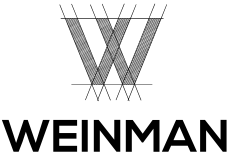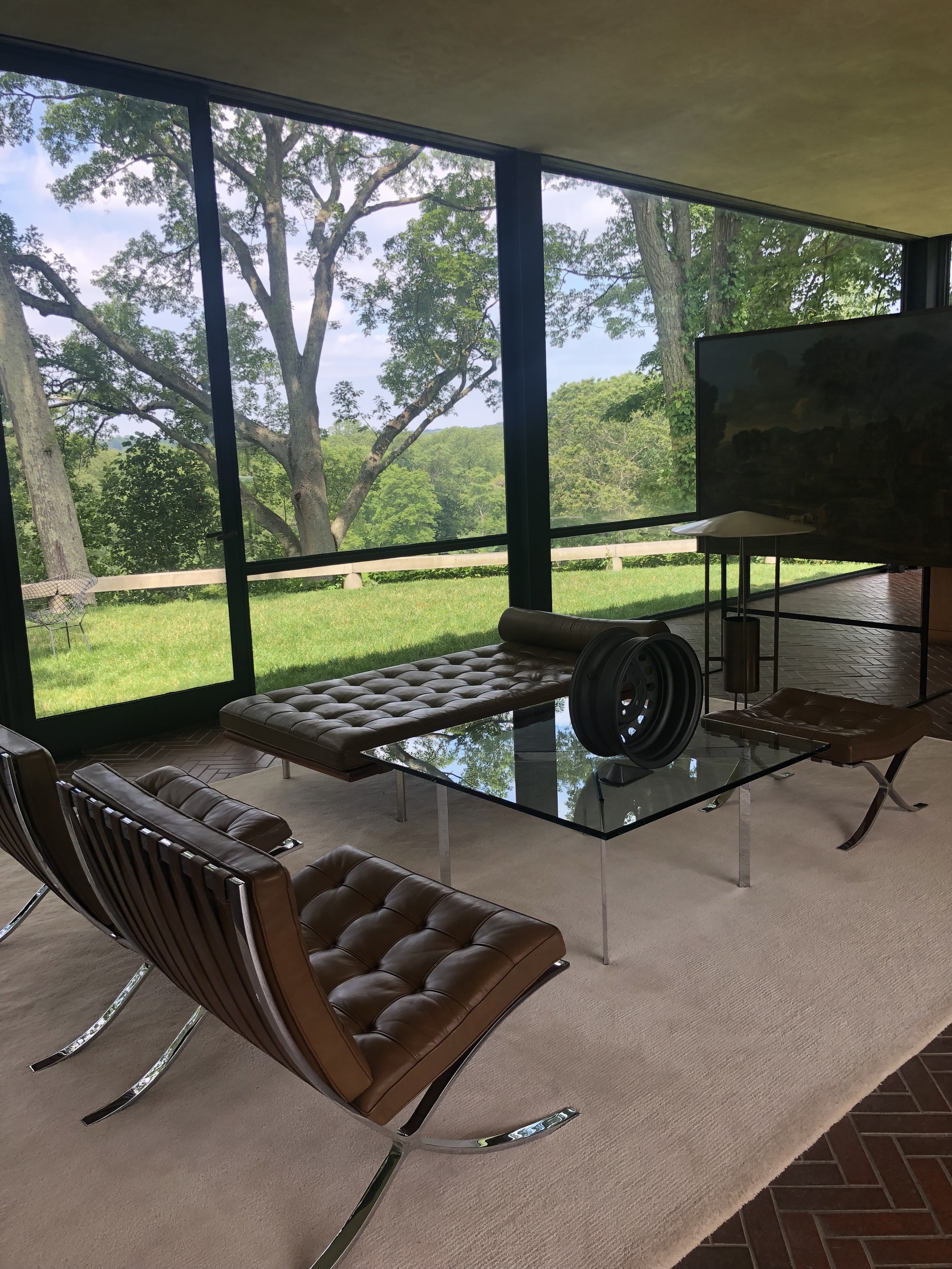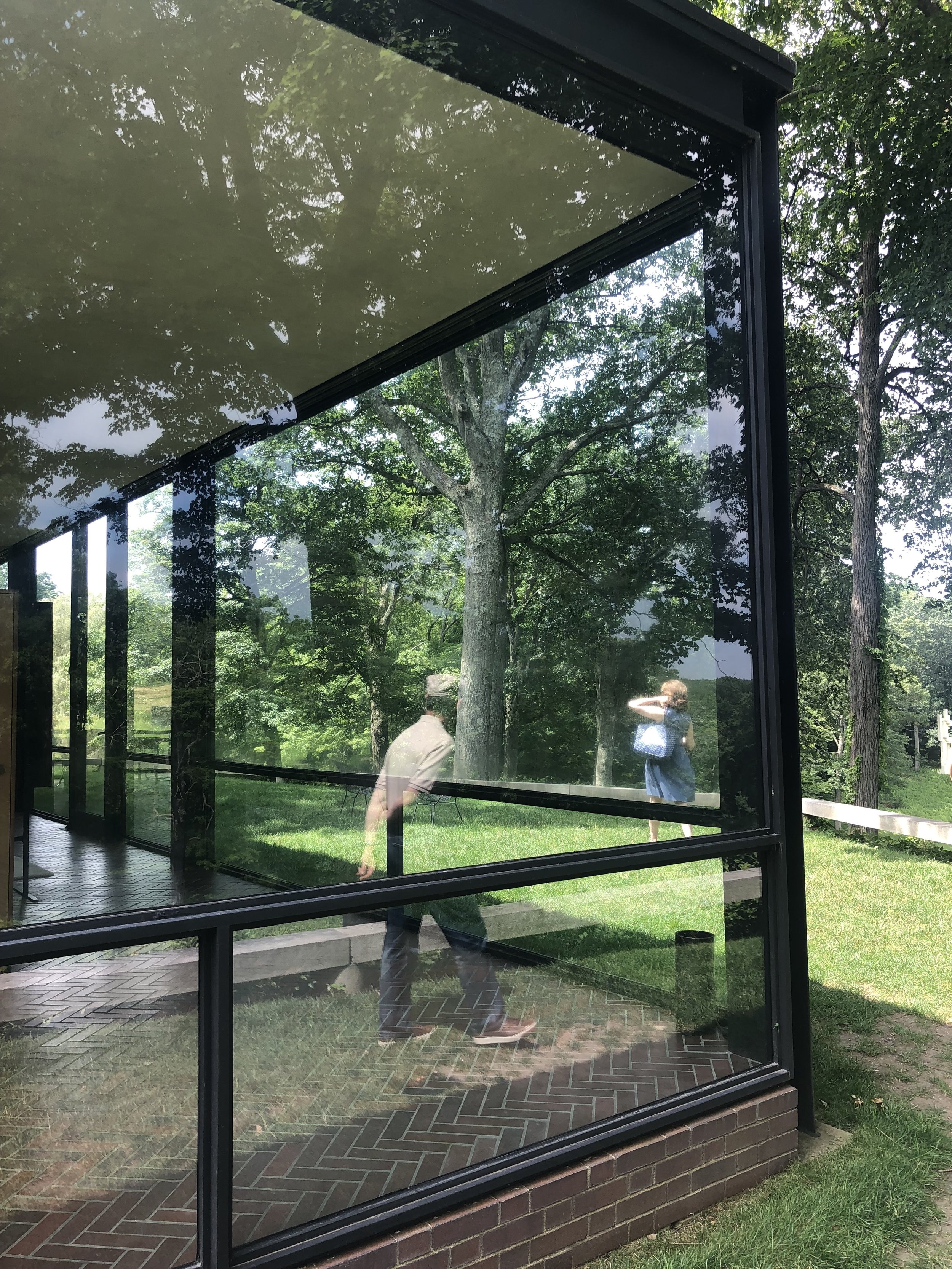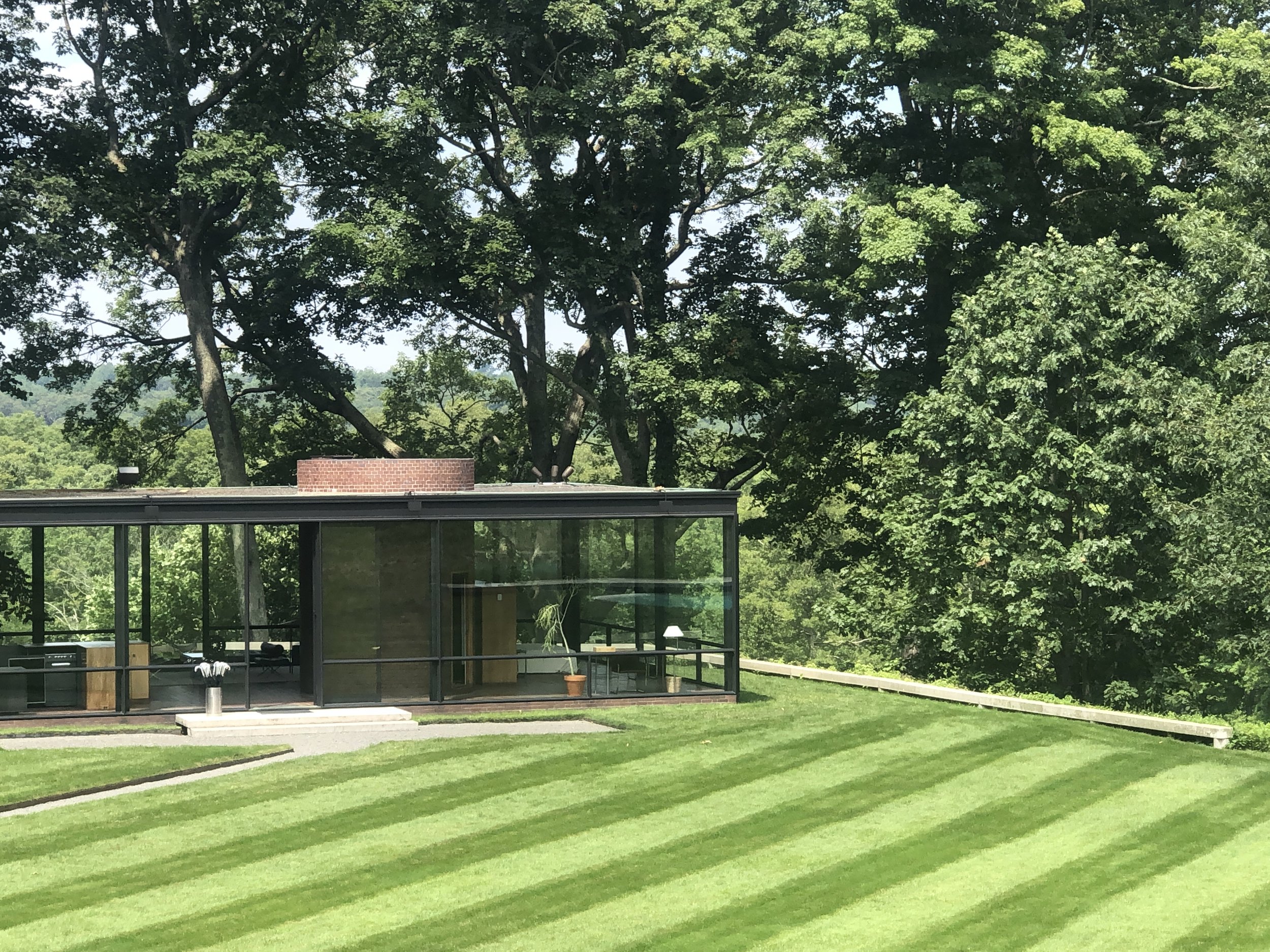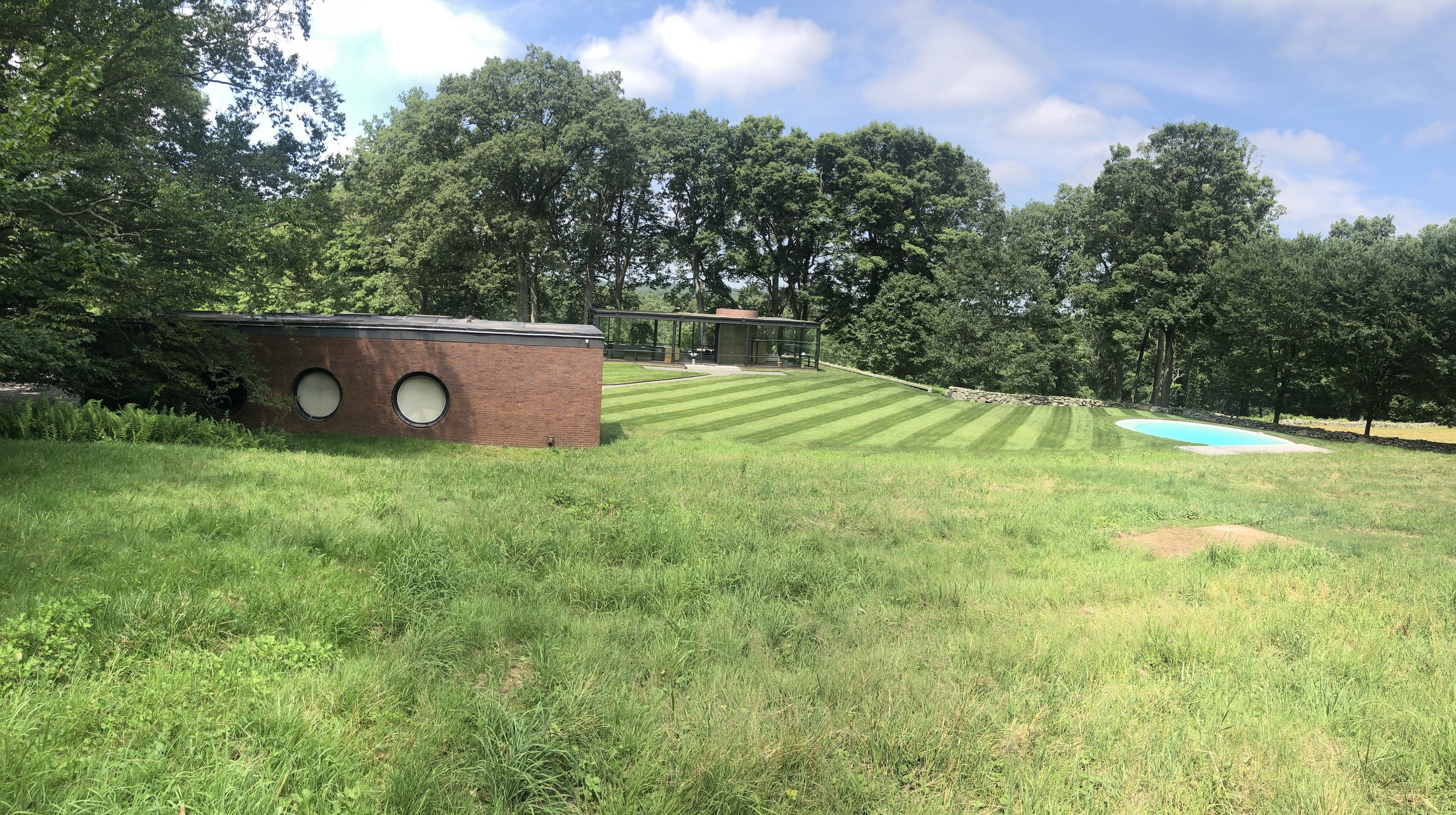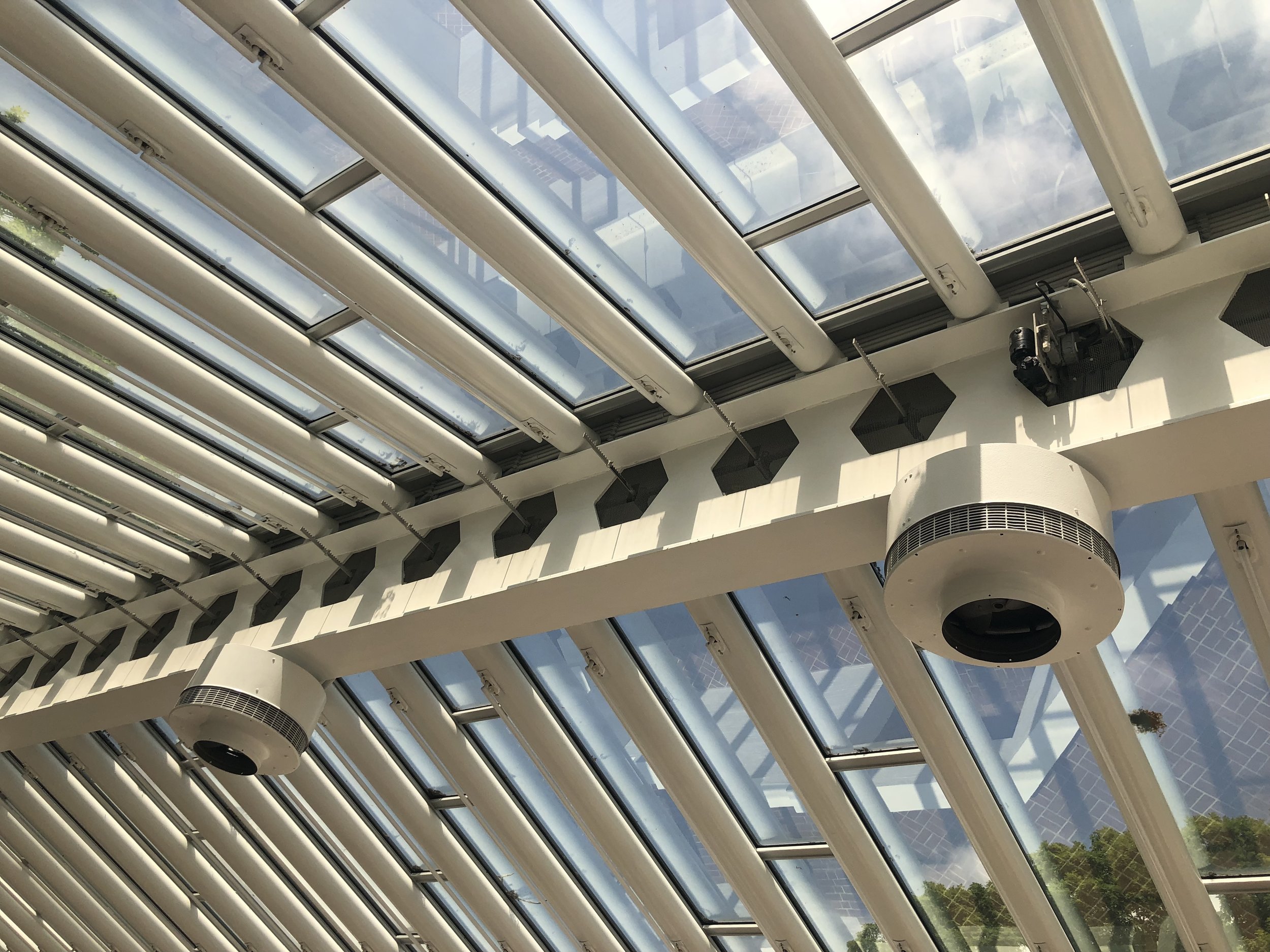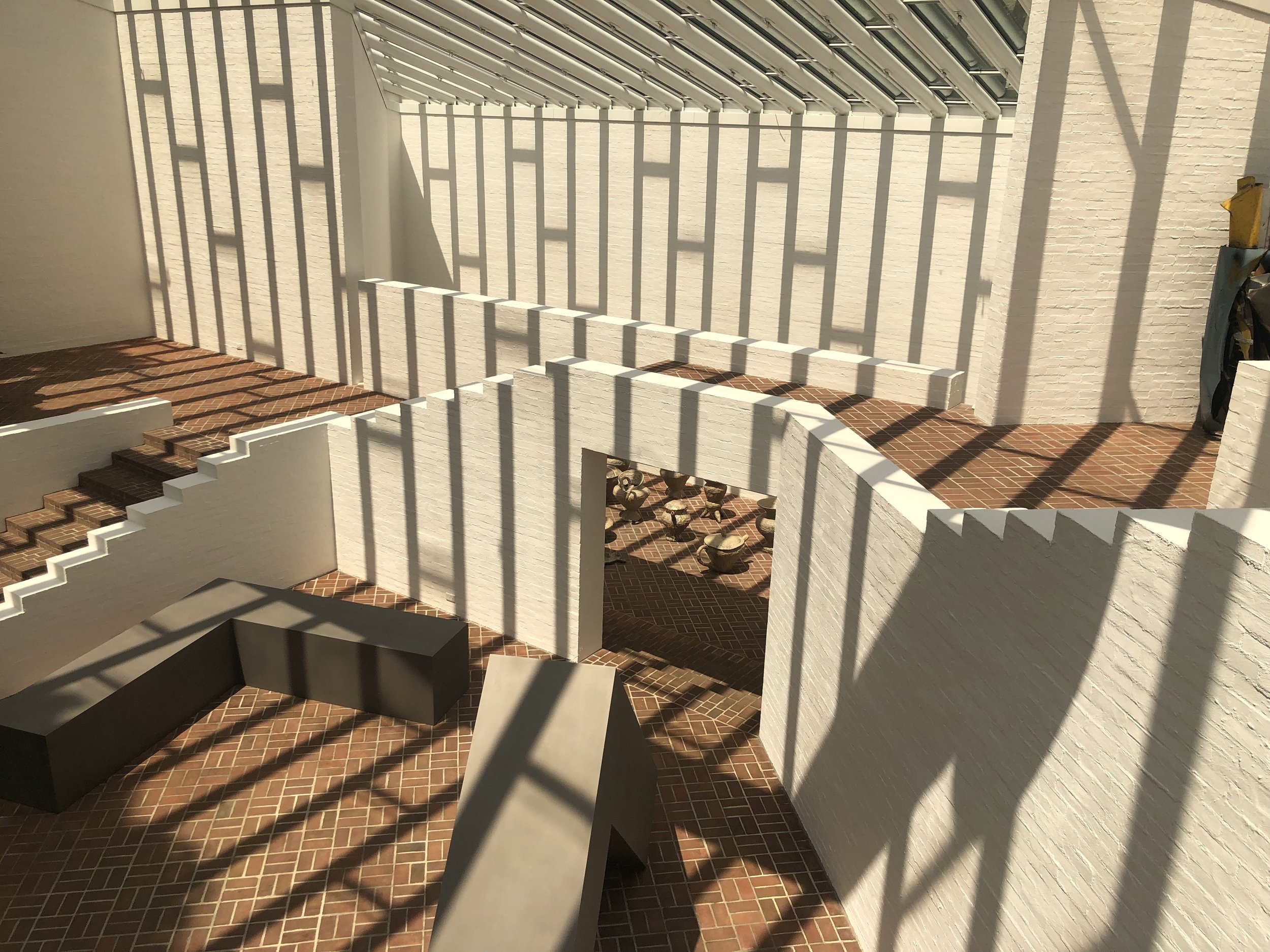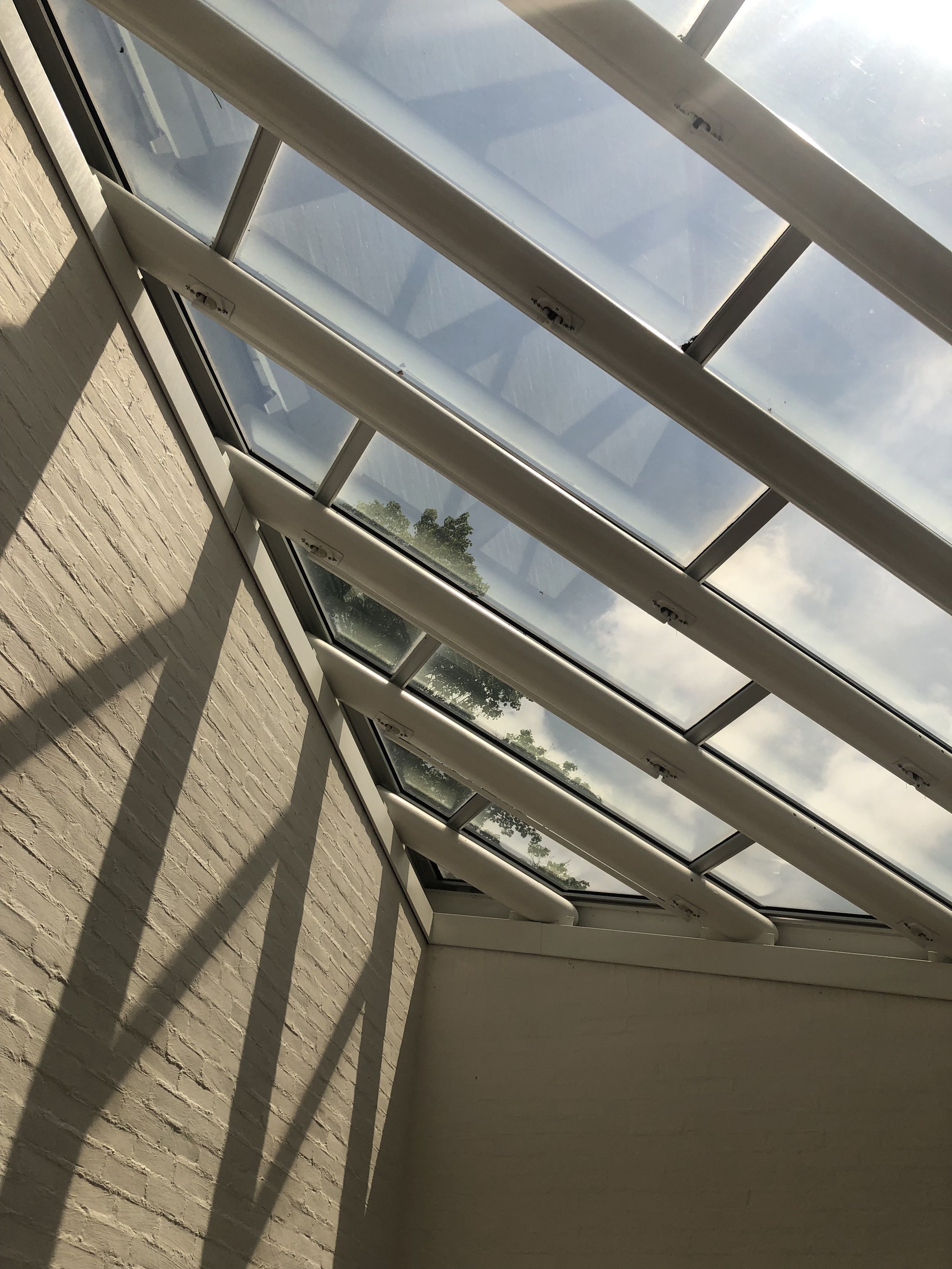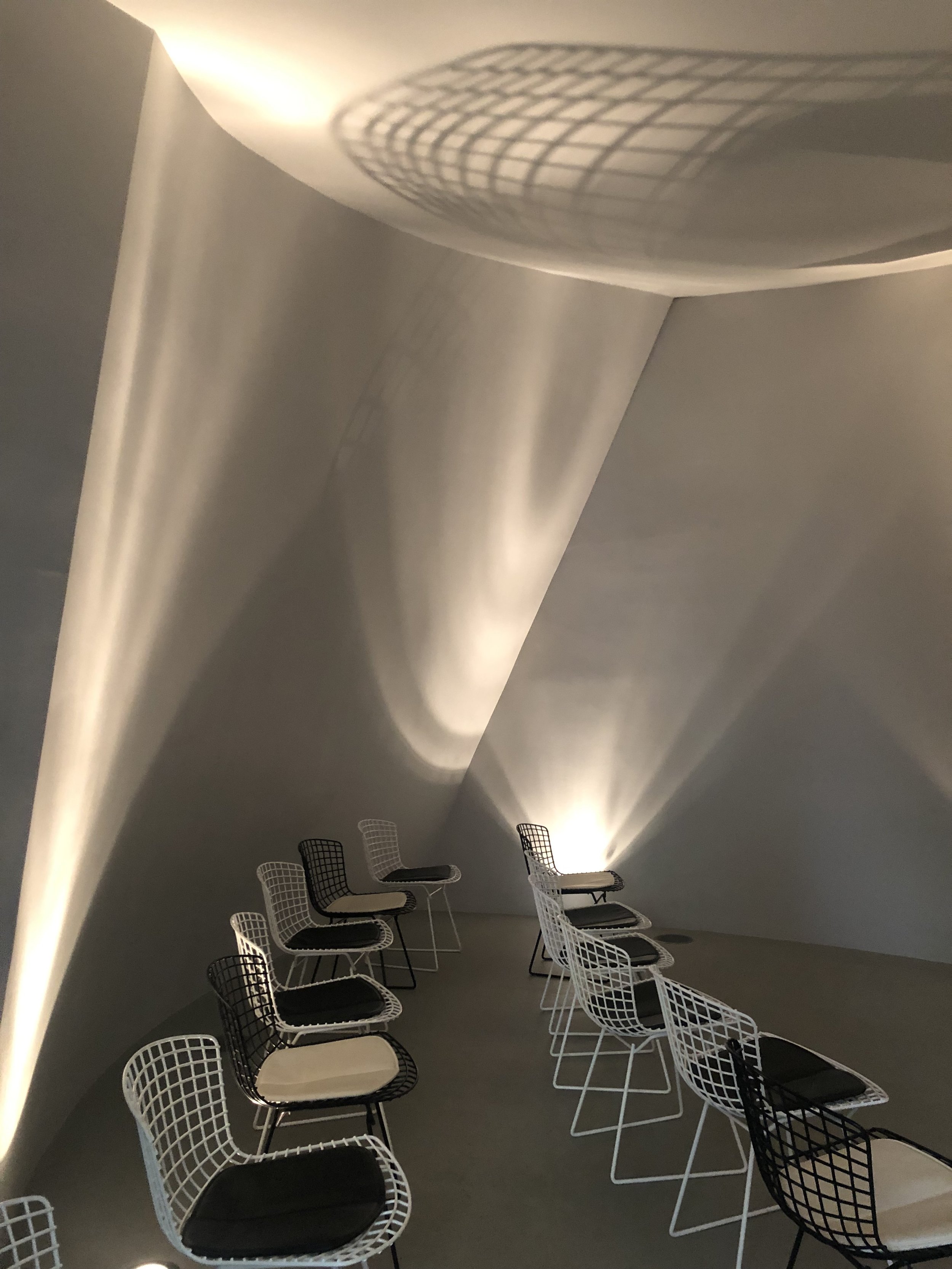The Glass House by Philip Johnson is an iconic home of his in New Canaan Connecticut. Even before he began designing buildings, Philip Johnson (1906–2005) was influencing architecture. At age 26, the Cleveland native and Harvard graduate became the first director of the department of architecture at the Museum of Modern Art. During his tenure at MoMA, Johnson promoted the work of modern architects including Mies van der Rohe and Walter Gropius, and along with Henry-Russell Hitchcock, he curated the controversial 1932 show “Modern Architecture: International Exhibition,” which introduced America to European modernism.
The Glass House
What was particularly impressive about Philip Johnson was the size of glass that was used back in the 40’s. I’m curious about what type of glass was available then, as only recently have glass manufacturers offered large format glass. Current Glass manufacturer’s I have dealt with have 70 square feet as their largest offering, yet the glass in the Glass House is larger than that!
Here are at least three common glass types.
Tempered Glass
Reflective Glass
Insulating Glass
I was informed during our visit to The Glass house that the glass is not tempered. Tempered means that the glass is made in such a many that it will break in tiny pieces as opposed to breaking in half, for the purpose of safety.
The glass was certainly not reflective from the outside, or no one would be able to see in. However, interestingly enough, there was reflectivity inside, at night, which was disturbing to Philip Johnson, and in order to eliminate that, down lights were installed on the outside, and evidently that eliminated the condition!
At that time, insulated glass was not made.
Therefore, the glass was a common plate glass, very large and thus must have been a huge expense, not a surprise. Johnson had all of the funding needed to build such an iconic house.
The mullions that are in between the glass are steel, and are also the fabric and structure of the home.
While we were there, we noticed some breakage in the glass which will certainly be repaired, if it has not already. Would love to know the price per square foot on that!
More research will continue to find that actual source and cost of the Glass House’ glass.
At that time, 1940’s more common glass types were perfume bottles, coke, cookware, doorknobs, pitchers, dinnerware……
So the fact that the Glass House’ glass was so expansive and used on each of the four exterior surfaces was Modern in of itself!
Detail of large glass
